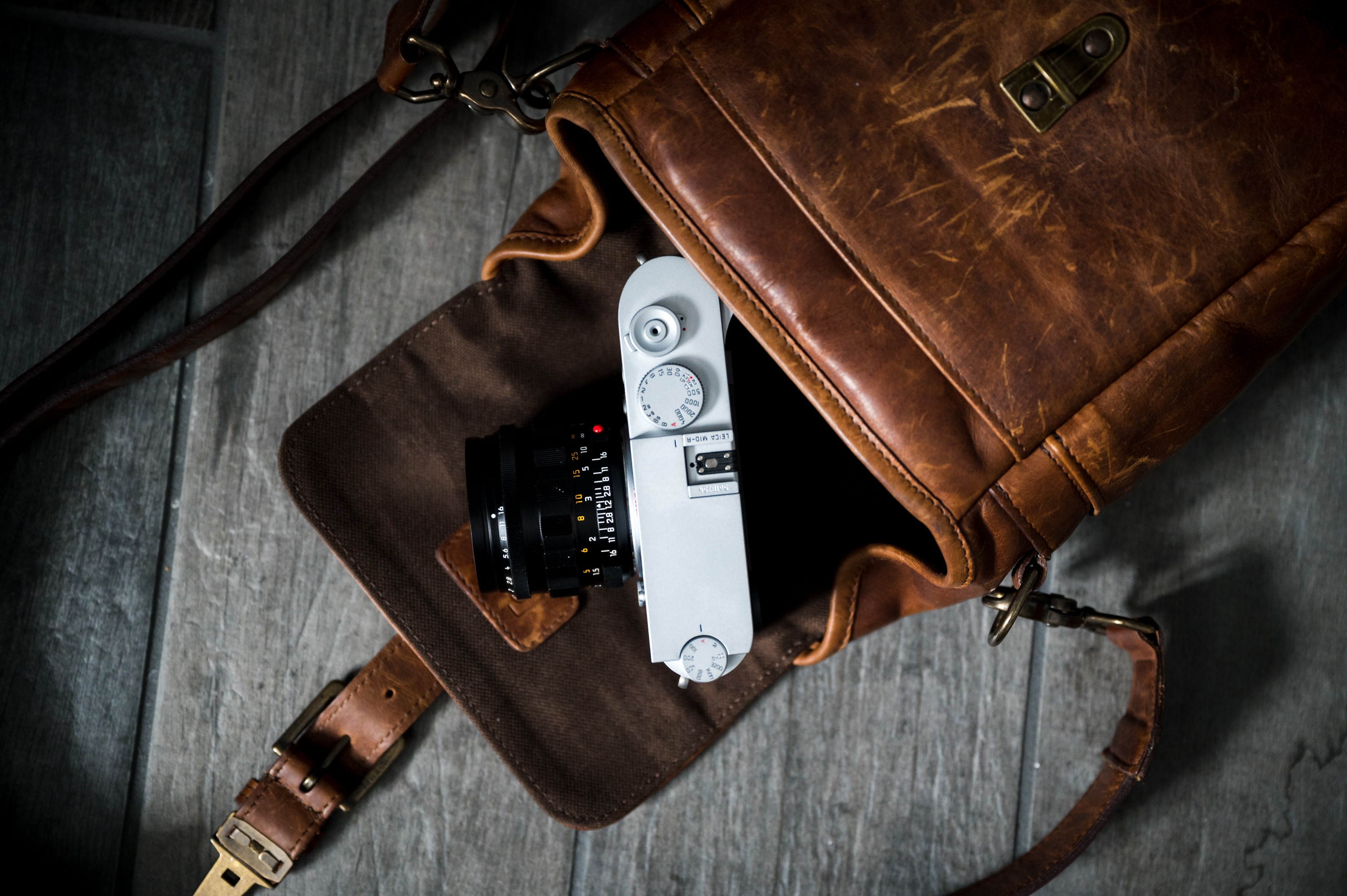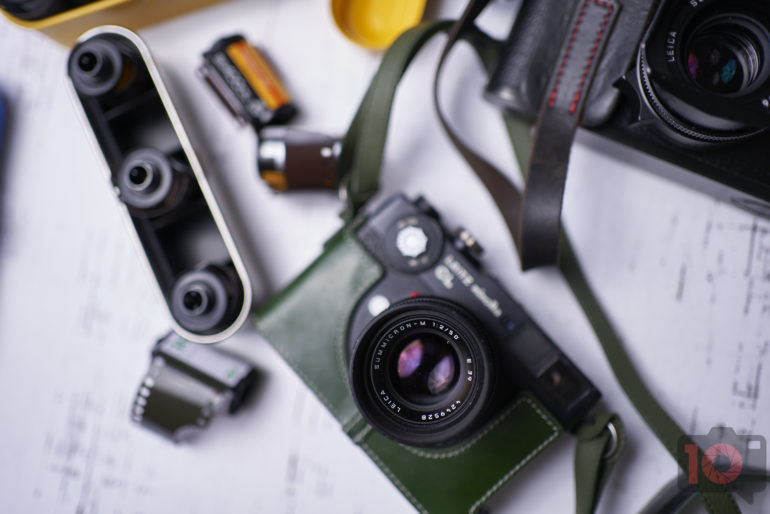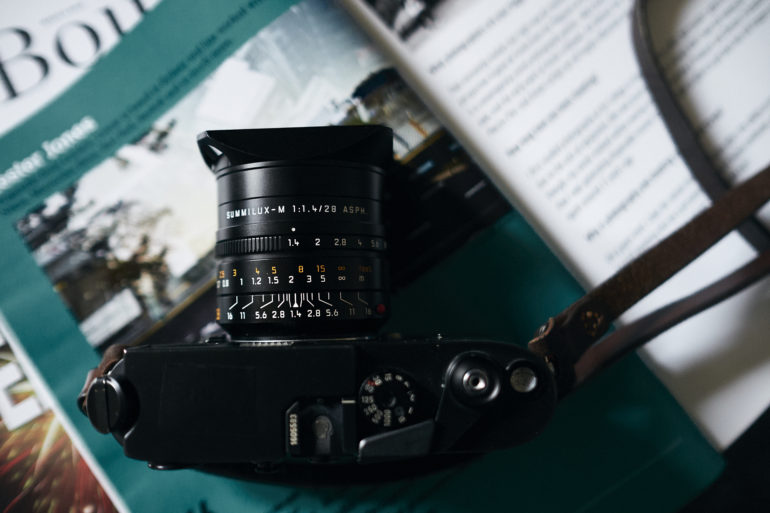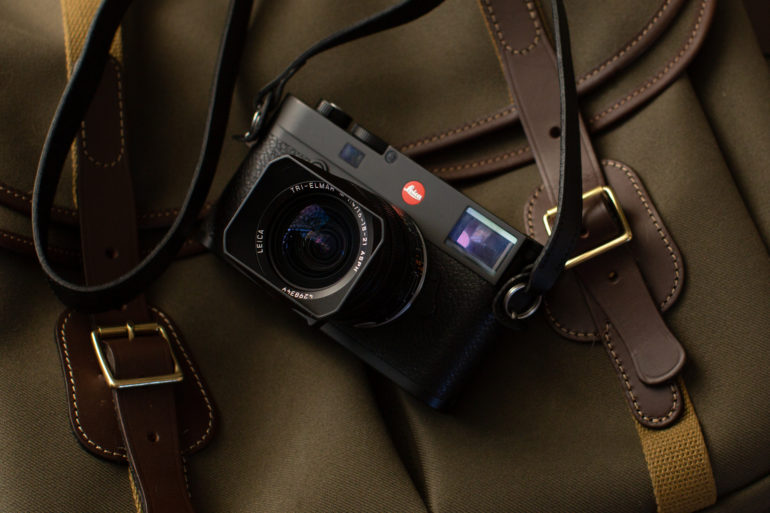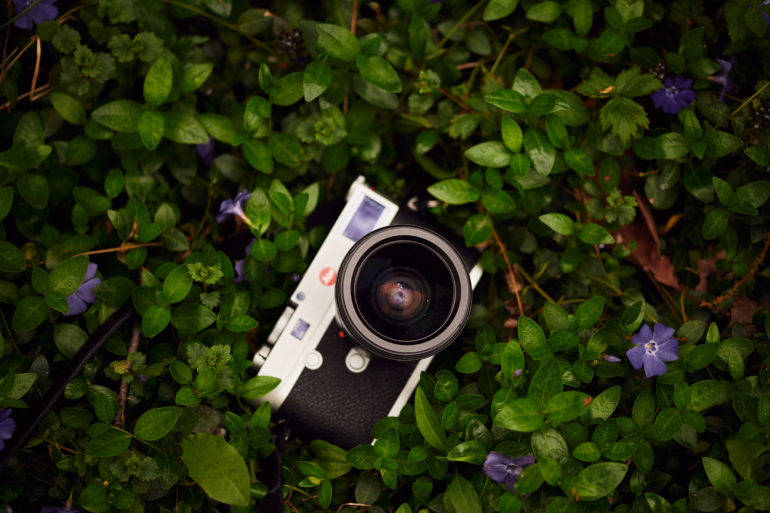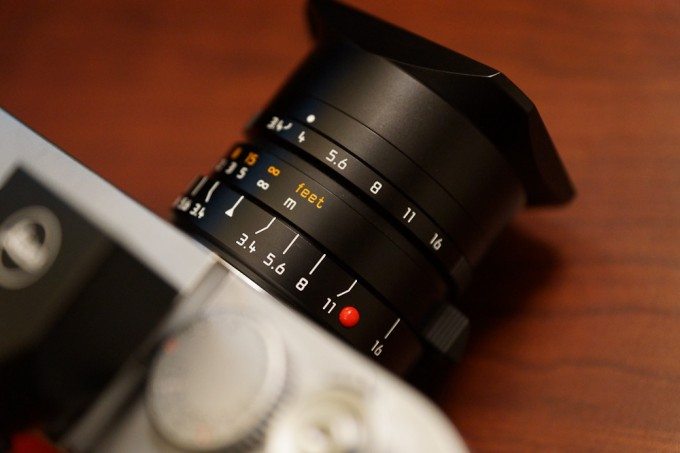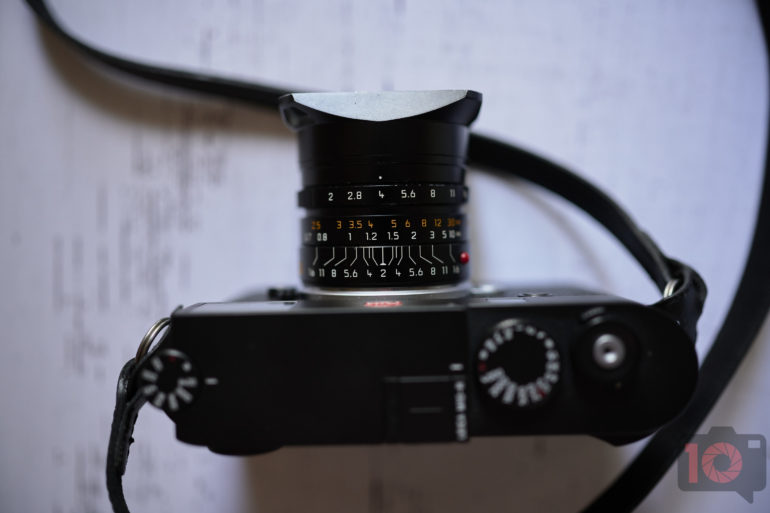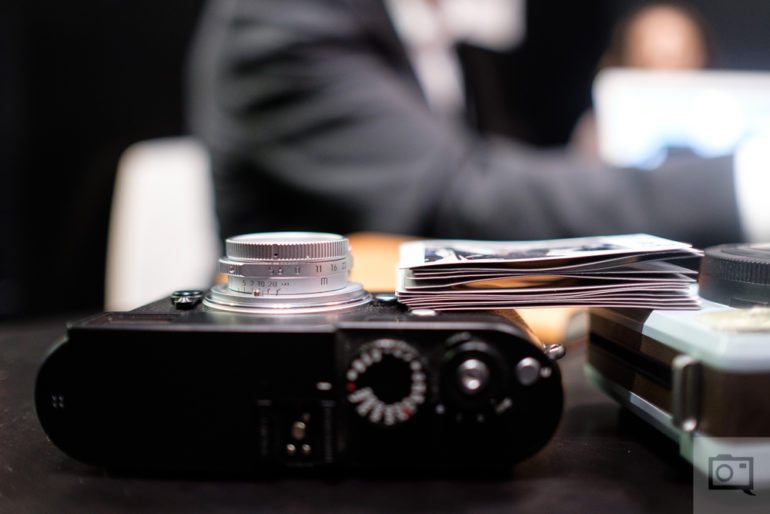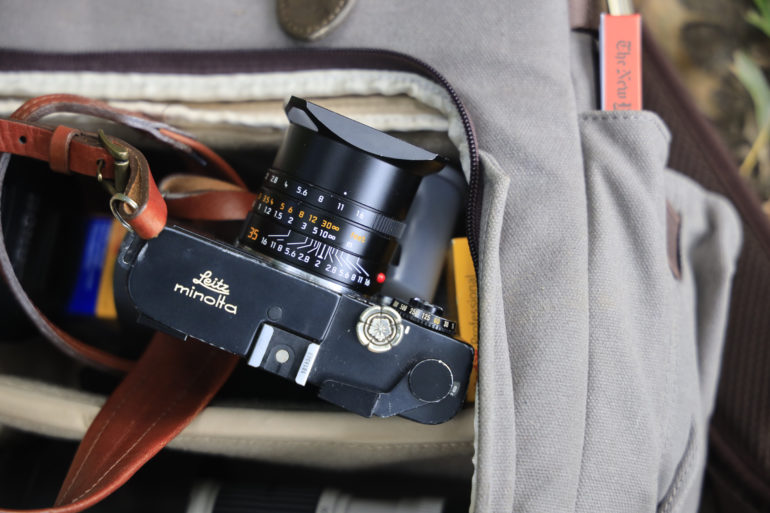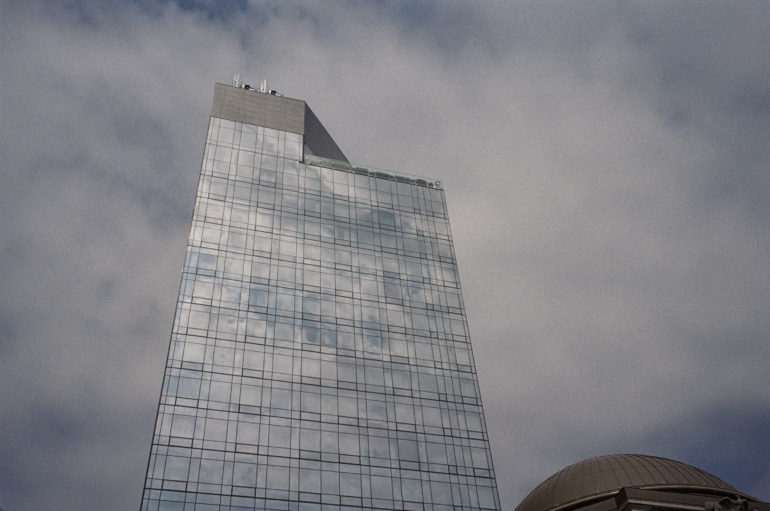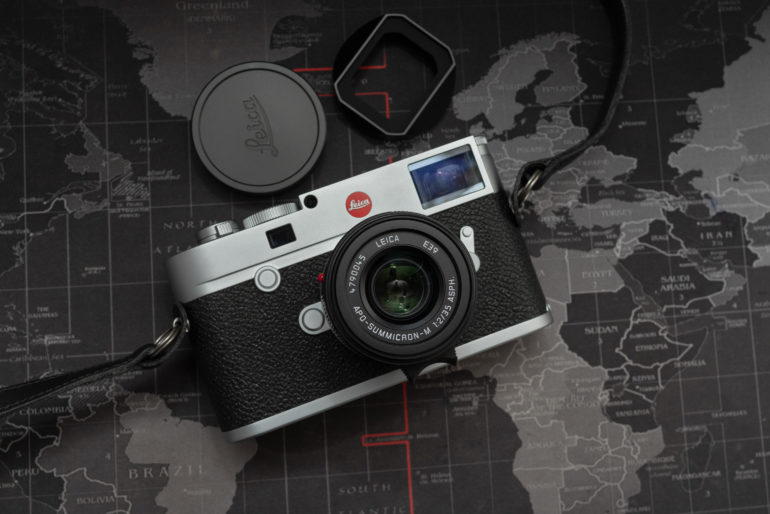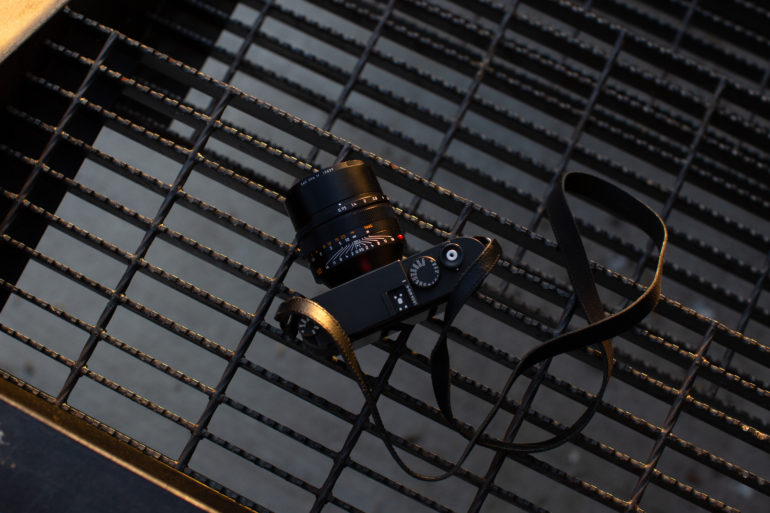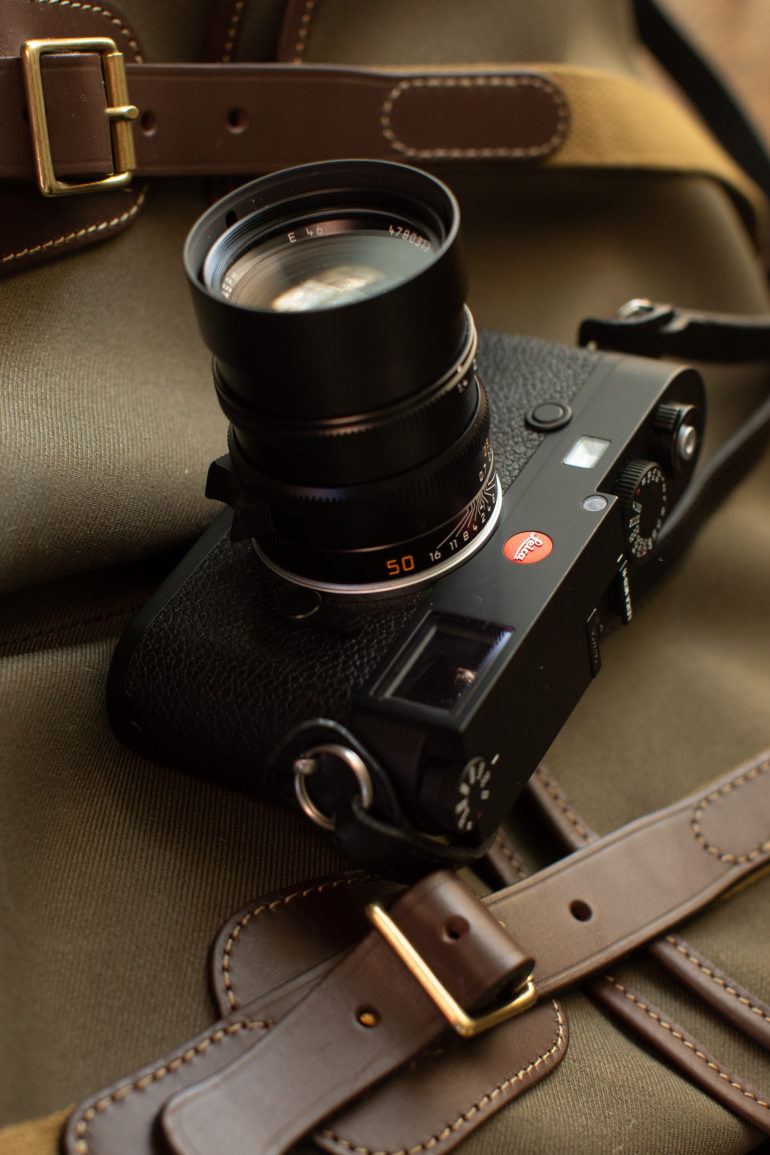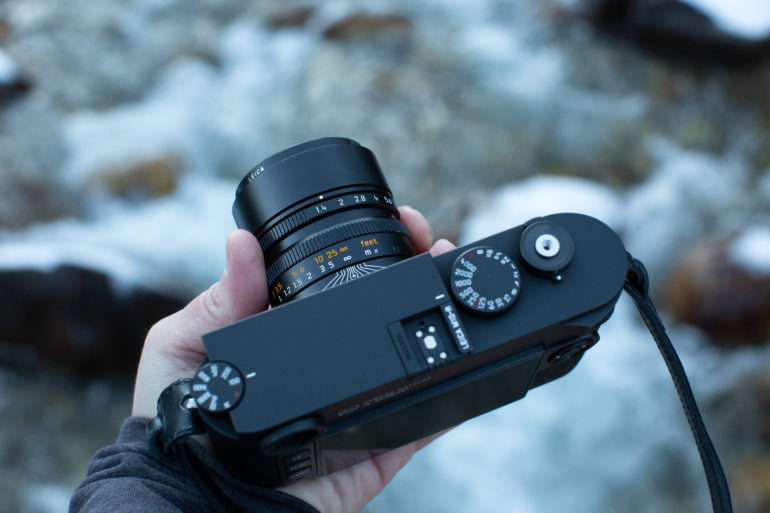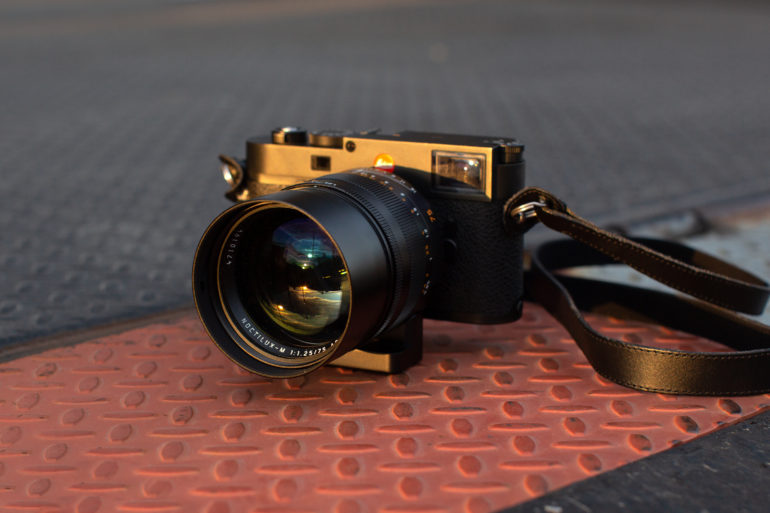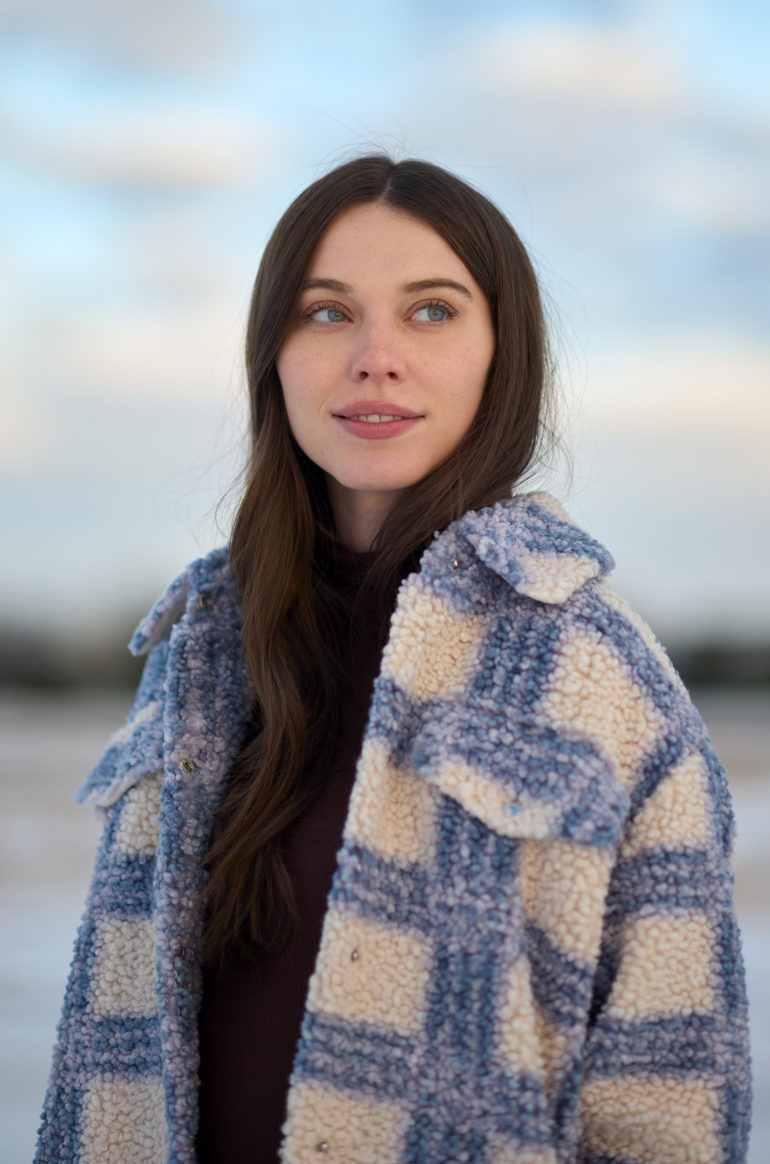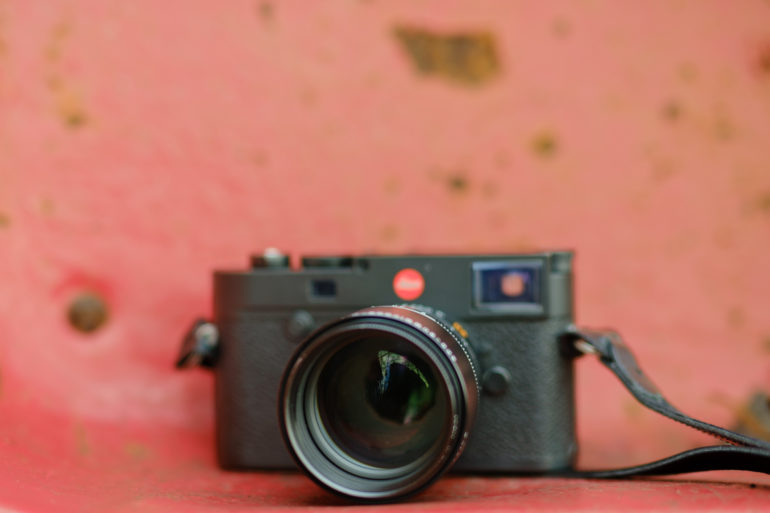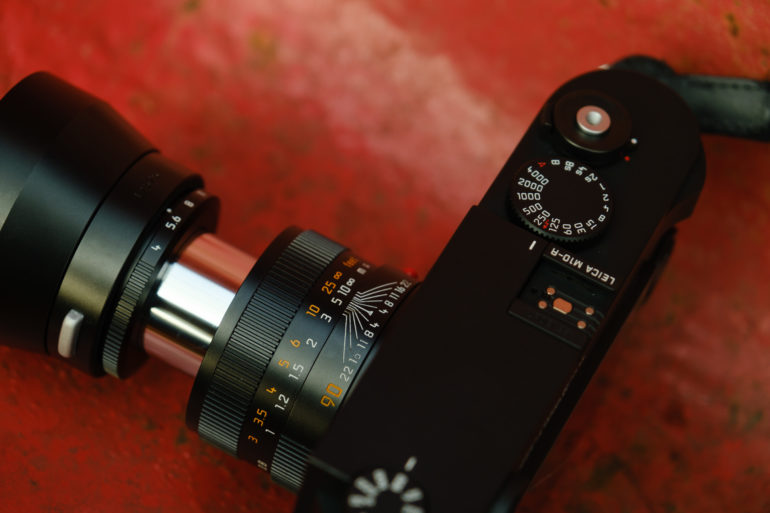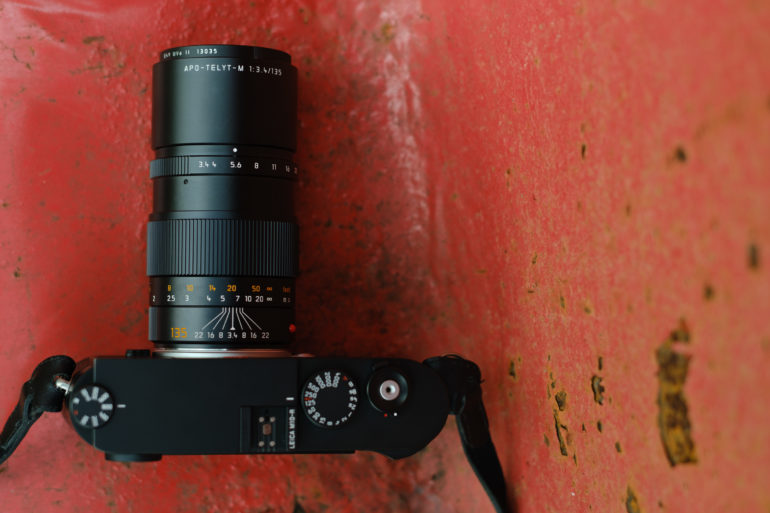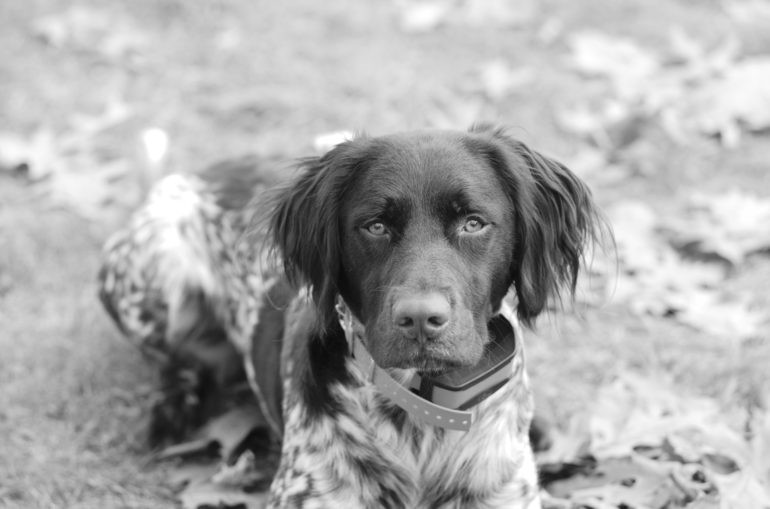Last Updated on 12/30/2021 by Chris Gampat
We’ve got some great news; we’ve reviewed every single Leica M-Mount lens currently offered! We’re incredibly excited to have done this. Along the way, we’ve learned so much about Leica optics and even about ourselves as photographers. Leica M lenses help you move at two speeds: super fast or super slow. (Sometimes, it’s a great idea to slow down. You potentially make better photos.) Without further adieu, we’re letting you dive into our Leica M Lens Guide. It’s complete with tips, naming conventions, tech specs, and blips from our full reviews. Plus, each lens featured here has a sample image from our reviews. All our reviews are done independently and according to our journalistic ethics — which adhere closely to what traditional magazines and newspapers have done. We hope this helps you find the right lens.
You can view this article and much more with minimal banner ads in our brand new app for iOS, iPadOS, and Android. For $24.99 per year, you can get it banner-ad free.
Table of Contents
Nomenclature for Leica M-Mount Lenses
Some things about Leica M-mount lenses might not be very clear. So here are a few things worth explaining that we think you’ll benefit from when reading our Leica M Lens Guide:
- M: Designed for full-frame M-mount cameras
- ASPH: Aspherical lens elements
- APO: Apochromatic design
- Noctilux: Faster than f1.4
- Summilux: f1.4 through f1.7
- Summicron: f2
- Summarit: f2.4 and f2.5
- Elmarit: f2.8
- Elmar: Around f3.4 to f4
- Summaron: f5.6
- Telyt: Long telephoto focal length
Tips on Picking the Right Leica M Lens for You
We’ve spent well over a decade reviewing Leica M-lenses. Here are some of the things we’ve learned along the way:
- If you’re thinking to always go for the lens with the fastest aperture, think carefully and look at the size and weight. Leica M camera bodies tend to go best with small, inconspicuous lenses (at least in our hands). This is especially the case for street photography.
- Make sure you clean the rangefinder window and your viewfinder.
- Zone focus is one of your best friends. Take a look at our video below on how to zone focus your lens.
- Grab a Leica visioflex if focusing is tough to do.
- Leica M lenses aren’t weather sealed. But photographers for many years have shared horror stories surrounding how well built they are and the torture they’ve survived.
- Don’t use a Leica M lens like you would a normal autofocus lens. Think ahead.
Leica Tri-Elmar-M 16-18-21 f4 ASPH
Tech Specs
- Diagonal viewing angle: 16/18/21 mm – 107 °/100 °/92 °
- Working range: 0.5 m to infinity
- Largest scale: 16/18/21 mm – at 0.7 m 1: 38/35/30
- Number of lenses/groups: 10/7
- Length * 1: 66 mm
- Weight * 1: 335 g
- Lens hood: can be screwed on
- Filter/filter thread: E67
In our review, we state:
“This lens creates beautifully saturated images with superb contrast. The tones are true to life and yet somehow even more pleasing. Skin tones are perfectly golden hues that aren’t overly magenta or green. Street scenes have an engaging extra pop of color, courtesy of the saturation and contrast provided by the Tri-Elmar.”
Leica Summilux-M 21 f1.4 ASPH
Tech Specs
- Diagonal angle of view: 92 °
- Working range: 0.7 m to infinity
- Biggest scale: 1:29
- Number of lenses/groups: 10/8
- Length * 1: 66 mm
- Weight * 1: 580 g
- Lens hood: can be screwed on
- Filter/filter thread: Insertion filter Series VIII in lens hood
- Made in Germany
In our review, we state:
“The Leica 21mm f1.4 Summilux ASPH falls in line with what I’ve come to expect with Leica — a well-built lens that delivers images with more character than technical perfection. The metal build is great, while you can get lots of different types of flare and even different shapes of bokeh.”
Buy Now: $8,595
Leica Super-Elmar-M 21 f3.4 ASPH
Tech Specs
- Diagonal angle of view: 91°
- Working range: 0.7 m to infinity
- Biggest scale: 1:29.8
- Number of lenses/groups: 8/7
- Length * 1: 43 mm
- Weight * 1: 279 g
- Lens hood: can be screwed on
- Filter/filter thread: E46
In our review, we state:
“There is no reason to expect anything different from Leica, but really, it’s a very impressive lens. It is razor sharp in the center, and that sharpness continues all the way out to the edges (where many super wide angle lenses begin to fall apart).”
Leica Summilux-M 28 f1.4 ASPH
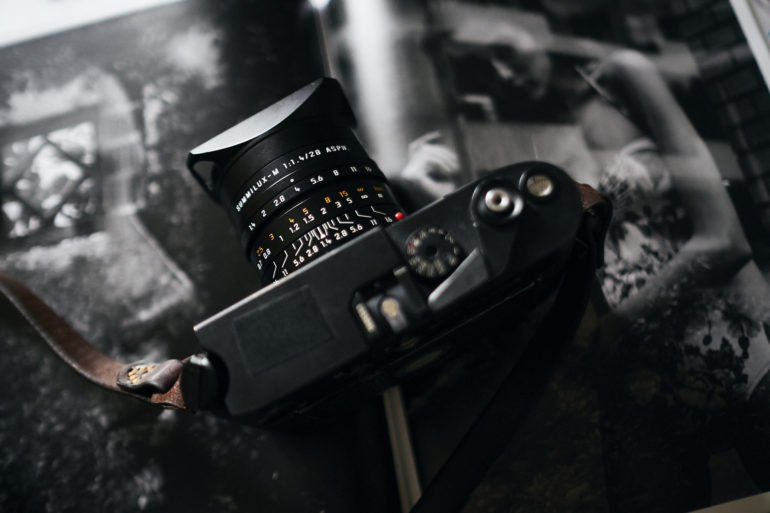
Tech Specs
- Diagonal picture angle: 75 °
- Working range: 0.7 m to infinity
- Biggest scale: 1: 21.9
- Number of lenses/groups: 10/7
- Length * 1: 67 mm
- Weight * 1: 440 g
- Lens hood: can be screwed on
- Filter/filter thread: E49
- Made in Germany
In our review, we state:
“There is seriously nothing like the Leica 28mm f1.4 Summilux. This applies to the quality of the bokeh, the colors, the ease of use, the sharpness, and the overall performance. Believe it or not, even though I was tempted to shoot with this lens wide open most of the time I resisted the urge and stopped it down. The choice was a good one, as I discovered just how incredibly sharp the Leica 28mm f1.4 Summilux is.”
Leica Summicron-M 28 f2 ASPH
Tech Specs
- Diagonal picture angle: 74 °
- Working range: 0.7 m to infinity
- Biggest scale: 1: 21.9
- Number of lenses/groups: 9/6
- Length * 1: 41.4 mm
- Weight * 1: 257 g
- Lens hood: can be screwed on
- Filter/filter thread: E46
- Made in Germany
In our review, we said:
“The Leica 28mm f2 Summicron ASPH is sharp without being overly intense. And if you’re doing environmental portraits, then you’ll like this. Otherwise, I personally think that this lens could be sharper wide open. However, they’ve got other lenses for that. Stopped down, though, the Leica 28mm f2 Summicron ASPH is plenty sharp, especially on the Leica M10R at low ISO settings.”
Leica Elmarit-M 28 f2.8 ASPH
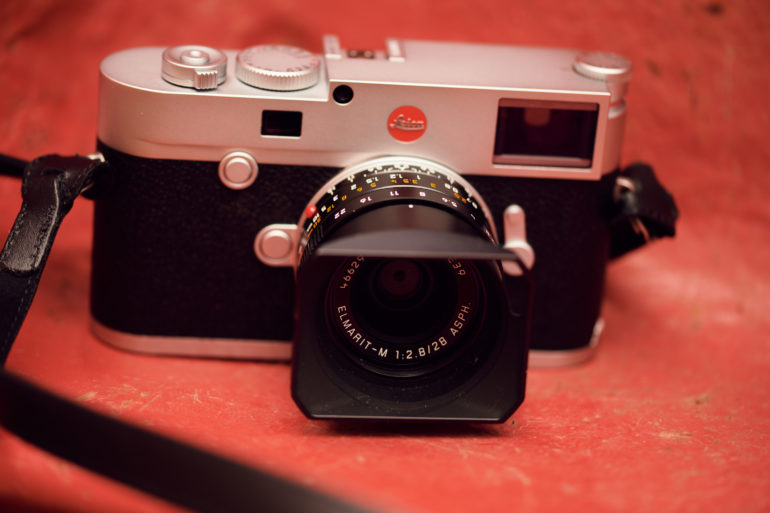
Tech Specs
- Diagonal picture angle: 75 °
- Working range: 0.7 m to infinity
- Largest scale: 1: 22.2
- Number of lenses/groups: 8/6
- Length * 1: 30.7 mm
- Weight * 1: 175 g
- Lens hood: can be screwed on
- Filter/filter thread: E39
- Made in Germany
In our review, we state:
“The 28mm has an ideal balance between being too soft and so sharp that you see every pore. The center is sharp wide open, and so are the edges. The very corners see a bit of softness wide open.”
Leica Summaron-M 28mm f5.6
Tech Specs
- Optical design similar to the original Summaron 28mm f/5.6 lens
- Most compact M-Lens, with an overall length of about 3/4” (less than 2cm) is unobtrusive and ideal for street photography
- Provides unmistakable imaging signature which otherwise cannot be reproduced by digital means
- Through its combination of large depth of field, natural contrast, excellent rendition of details, and visible vignetting, the Summaron-M gives images a unique character, reminiscent of analog photography
- Combination of a clearly laid out depth of field scale and long focus throw allows precise and easy zone focusing
- Depth of field scale is colored in red
- Assembled by hand from top quality materials and finished in Silver Chrome
- Made in Portugal and delivery scope includes metal lens hood and cap.
- The design and manufacturing process of the metal lens hood has been recreated to match the original Summaron lens. It is first machined from solid brass and then given its ultimate form by a turning and bending process.
In our review, we state
“When the Leica Summaron-M 28mm F5.6 first came in for review, I wasn’t sure what I’d think of it. However, I’ve been making an effort to review more Leica lenses and I have to say this is one of my favorites by far. It’s at a decent price point and for that price point you’re getting a whole lot of adaptability,classic image quality, low profile and some solid build quality. I genuinely like the Leica Summaron-M 28mm F5.6 and one day when it hits the used market, I’ll probably pick one up.”
Leica Summilux-M 35 f1.4 ASPH
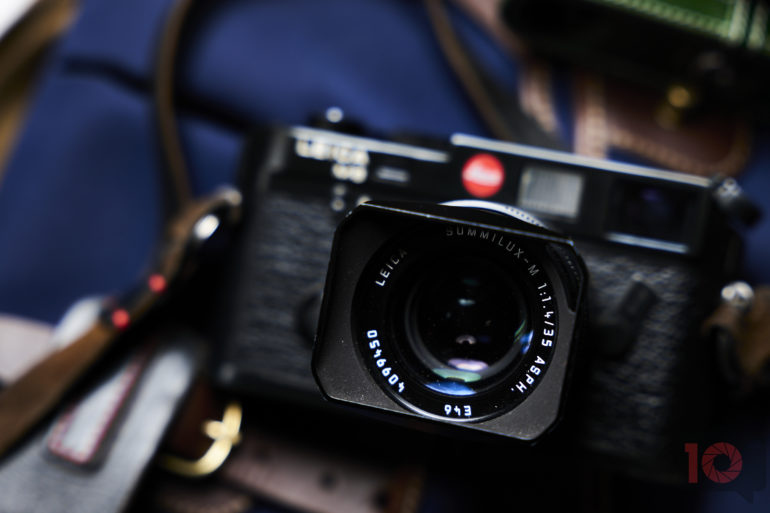
Tech Specs
- Diagonal angle of view: 63 °
- Working range: 0.7 m to infinity
- Biggest scale: 1: 17.4
- Number of lenses/groups: 9/5
- Length * 1: 46 mm
- Weight * 1: 320g
- Lens hood: can be screwed on
- Filter/filter thread: E46
- Made in Germany
In our review, we state:
“The Leica 35mm f1.4 Summilux ASPH is beautiful in so many ways. The contrast isn’t that high, but the colors are very saturated, so it might seem otherwise. The lens is sharp overall. Plus, there’s nice bokeh. It’s hard to find a flaw with the image quality from this lens.”
Leica Summicron-M 35 f2 ASPH
Tech Specs
- Diagonal angle of view: 63 °
- Working range: 0.7 m to infinity
- Biggest scale: 1: 17.4
- Number of lenses/groups: 7/5
- Length * 1: 35.7 mm
- Weight * 1: 252 g
- Lens hood: can be screwed on
- Filter/filter thread: E39
- Made in Portugal
In our review, we state:
“With the Leica 35mm f2 ASPH Summicron, you’re getting solid image quality for a pretty affordable Leica price point. For the photographer that is bound to stop the lens down and use it anywhere at around f5.6 or so, you’re going to get solid results consistently.”
Leica APO-Summicron-M 35mm f2 ASPH
Tech Specs
- Unmatched image quality
- Contemporary design
- Easy to focus
- Most compact 35mm full frame lens with this exceptional optical performance
- Closest focus distance in M lens portfolio – up to 0.3m
In our review, we state:
“For a 35mm lens, the bokeh is off the charts good. It’s smooth, it’s creamy, and it’s dreamy. Bokeh balls are nice and round, and there’s hardly any evidence of cats-eye bokeh in the corners. Some of you will say, ‘Well, there’s some onion bokeh going on.’ Get over it. It adds to the charm and character of this beautiful lens. I’m sick of technically perfect, lifeless, clinical images. Thankfully, the Leica APO Summicron 35mm f2 ASPH knows how to deliver. Put the close focusing to work and then gawk at the gorgeous renderings.”
Leica Noctilux-M 50 f0.95 ASPH
Tech Specs
- Diagonal picture angle: 47 °
- Working range: 1 m to infinity
- Biggest scale: 1:17
- Number of lenses/groups: 8/5
- Length * 1: 75.1 mm
- Weight * 1: 700 g
- Lens hood: Pull-out and lockable
- Filter/filter thread: E60
In our review, we said:
“The colors produced by Leica’s 50mm Noctilux lens are fantastic. Leica is renowned for its tones, and the hues of this lens are stunning. Winter scenes are brought to life with the sun’s golden hues against the blue shadows. The skin tones are spot on and do not require correction. I appreciate the true, deep blacks that this lens provides. It is ideal for fashion photography.”
Leica Noctilux-M 50mm f1.2 ASPH
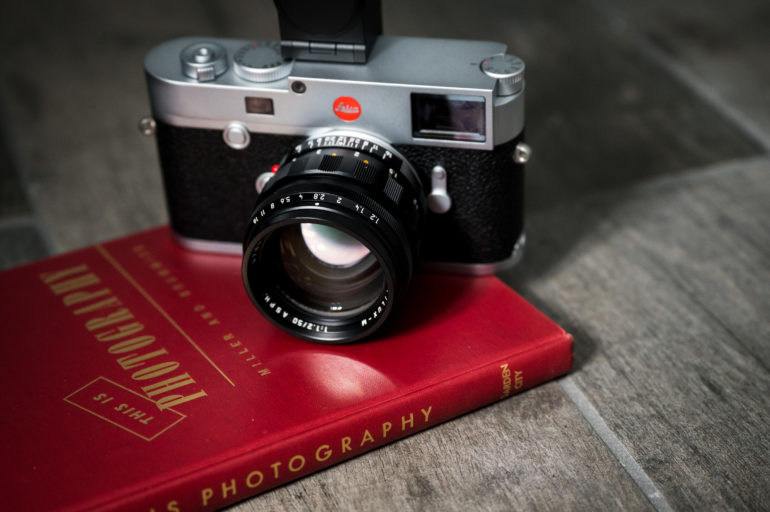
Tech Specs
- 16 aperture blades
- Maximum aperture f16
- Focus range 3.2 feet (one meter) to infinity
- Constructed from 6 lenses in 4 groups with 2 aspherical elements
- 2.04 inches long (3.11 with lens hood attached)
In our review, we state:
“That design also mimics the image quality of the original. The lens creates a dreamy softness and dark vignette at f1.2, with sharp subjects and deep colors stepped down. Vintage lenses offer some of that film look without the actual film. The Leica Noctilux 50mm f1.2 ASPH offers that old look, without the $40,000 price tag the original lens is fetching on eBay.”
Leica Summilux-M 50 f1.4 ASPH
Tech Specs
- Diagonal picture angle: 47 °
- Working range: 0.7 m to infinity
- Largest scale: 1: 11.3
- Number of lenses/groups: 8/5
- Length * 1: 52.5 mm
- Weight * 1: 335 g
- Lens hood: Pull-out and lockable
- Filter/filter thread: E46
- Made in Germany
In our review, we state:
“The Leica Summilux 50mm lens creates beautifully sharp images with plenty of bokeh. The colors are gorgeous and creamy. It can provide punchy contrast in ideal situations, making fantastic monochrome images. The contrast isn’t overbearing, especially in soft light.”

Leica Summicron-M 50 f2
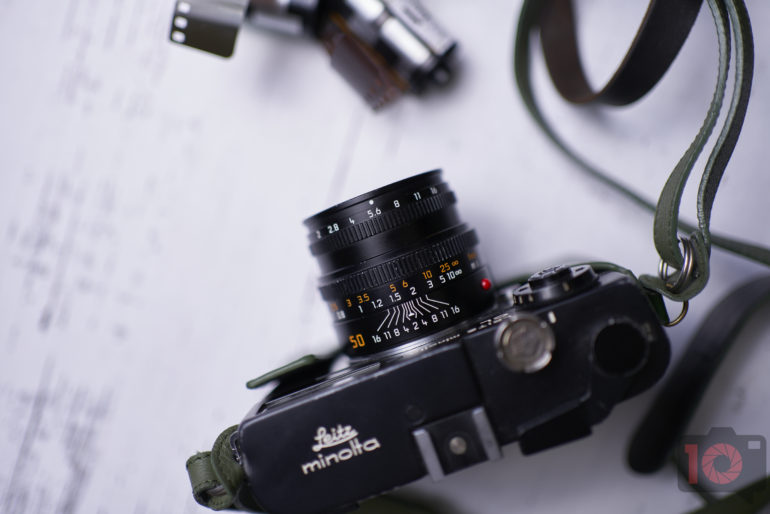
Tech Specs
- Diagonal picture angle: 47 °
- Working range: 0.7 m to infinity
- Largest scale: 1: 11.5
- Number of lenses/groups: 6/4
- Length * 1: 43.5 mm
- Weight * 1: 240g
- Lens hood: Pull-out
- Filter/filter thread: E39
- Made in Germany
In our review, we state:
“The Leica 50mm f2 Summicron M is a stunning beauty in the image quality department. If you’re a pixel peeper, you’ll probably be impressed here. But honestly, this site was designed for folks who don’t pixel peep. Instead, you’ll appreciate how sharp it is without using tricks like contrast or saturation to make it appear sharper than it really is. Sharpness isn’t everything, though. The bokeh is smooth. The colors are beautiful. And, of course, there’s lens character.”
Leica APO-Summicron-M 50 f2 ASPH
Tech Specs
- Diagonal picture angle: 47°
- Working range: 0.7m to infinity
- Largest scale: 1:11.3
- Number of lenses/groups: 8/5
- Length * 1: 47 mm
- Weight * 1: 300 g
- Lens hood: built-in
- Filter/filter thread: E39
In our review, we state:
“The combination of the Leica 50mm f2 Summicron APO lens paired with the Leica M10-r creates true-to-life colors with the extra pop Leica is known for. The need for any color correcting in post-production is minimal at most. Because of this, I became very fond of shooting during sunset as well as transitioning into the blue hour.”
Leica Noctilux-M 75mm f1.25 ASPH
Tech Specs
- Diagonal angle of view: 32 °
- Working range: 0.85 m to infinity
- Biggest scale: 1: 8,8
- Number of lenses/groups: 9/6
- Length * 1: 91 mm
- Weight * 1: 1055 g
- Lens hood: Integrated
- Filter/filter thread: E67
- Made in Germany
In our review, we said:
This lens creates some of the best bokeh available on a 75mm lens. It’s painterly aesthetic is perfect for making your subjects pop. The bokeh is also beautiful when stopping down slightly.
Leica APO-Summicron-M 75 f2 ASPH
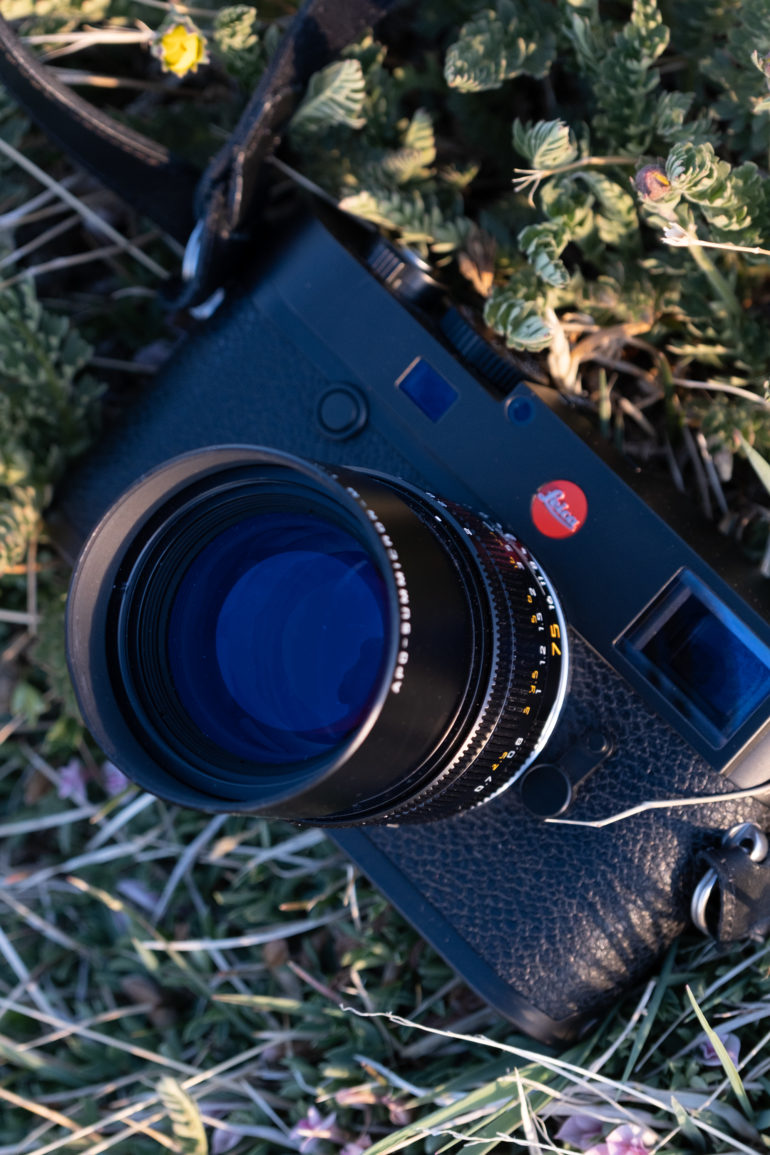
Tech Specs
- Diagonal angle of view: 32 °
- Working range: 0.7 m to infinity
- Biggest scale: 1: 7
- Number of lenses/groups: 7/5
- Length * 1: 66.8 mm
- Weight * 1: 430 g
- Lens hood: Pull-out and lockable
- Filter/filter thread: E49
In our review, we state:
“The Leica 75mm f2 APO Summicron-M ASPH is a small telephoto lens among the Leica lineup. It makes up for its departure from the timeless Leica M-mount lens character with unrivaled sharpness, painterly bokeh, and accurate captures.”
Leica Summilux-M 90 f1.5 ASPH
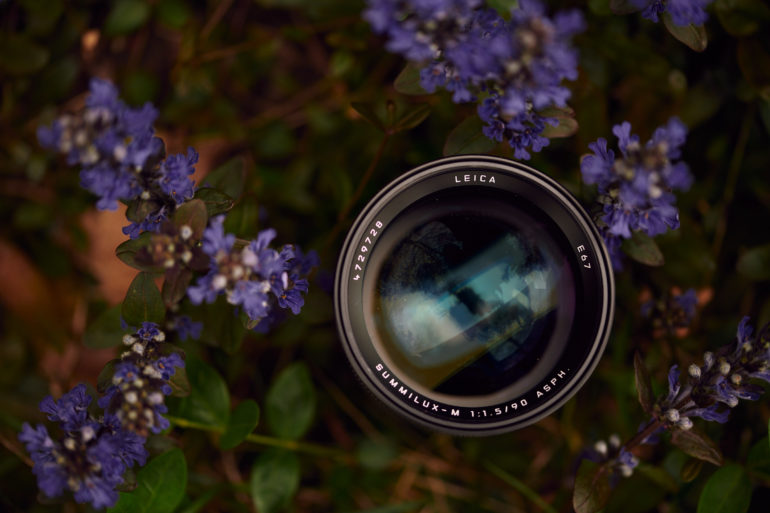
Tech Specs
- 8 lens elements, two of which are aspherical in design and made of specialized glass types
- Latest in the long line of famed Summilux lenses, for the very first time in 90 mm focal length
- Perfect for portraits with an incredibly shallow depth of field
- Brings portraits to life with a new level of sharpness
- First Summilux lens with 90 mm f-length
In our review, we state:
“The Leica 90mm Summilux delivers plenty of bokeh at f1.5. The background just melts away. Grass becomes a blur so smooth, it almost looks like background paper. The longer focal length and full-frame sensor mean there’s still some bokeh to be had when stepping the lens down as well. Points of light are soft and circular. I didn’t spot onion ringing or soap bubble bokeh.”
Leica APO-Summicron-M 90 f2 ASPH
Tech Specs
- Diagonal picture angle: 27 °
- Working range: 1 m to infinity
- Biggest scale: 1: 9
- Number of lenses/groups: 5/5
- Length * 1: 78 mm
- Weight * 1: 500 g
- Lens hood: Pull-out and lockable
- Filter/filter thread: E55
- Made in Germany
In our review, we state:
“At f2, a sharp subject quickly gives way to a soft background. Subjects really pop with this lens. Even stopped down to f4.8, the sharpness has a nice gradual falloff. The 90mm focal length allows even shots at that same narrower aperture to create bokeh balls.”
Leica Macro-Elmar-M 90 f4
Tech Specs
- Diagonal picture angle: 27 °
- Working range: 0.8 m to infinity
- Biggest scale: 1: 6,8
- Number of lenses/groups: 4/4
- Length * 1: 59 mm
- Weight * 1: 230 g
- Lens hood: attachable
- Filter/filter thread: E39
- Made in Germany
In our review, we state:
“The Leica Macro Elmar 90mm shouldn’t be overlooked just because it’s an f4. The lens is a tiny yet beautifully made optic. It has the build of a classic Leica M mount lens, yet a unique collapsible design that also helps achieve focus at infinity. Images have a classic feel to them, with rich contrast and undersaturated colors. The centers are sharp, the edges soft, and there’s the option to either control or create beautiful, soft flare.”
Leica APO-Telyt-M 135 f3.4
Tech Specs
- Diagonal picture angle: 18 °
- Working range: 1.5 m to infinity
- Biggest scale: 1: 9
- Number of lenses/groups: 5/4
- Length * 1: 104.7 mm
- Weight * 1: 450 g
- Lens hood: Pull-out and lockable
- Filter/filter thread: E49
- Made in Germany
In our review, we state:
“Facing the light, this lens does a bang-up job maintaining contrast and not succumbing to too much flare. If you want some flare, just place the light source on any edge of the frame. You’ll be rewarded with a beautiful soft spot of light. This is really an ideal scenario since, if I want flare, I want it towards the edge so I still have room for the subject. But, if you don’t want flare, just adjust the composition so that the light source isn’t on an edge.”
This piece is presented in partnership with LEICA. We’ve independently and ethically reviewed all the products in this post already without sponsorship. And we worked with them to recommend a few key gems to you.
The Phoblographer’s various product round-up features are done in-house. Our philosophy is simple: you wouldn’t get a Wagyu beef steak review from a lifelong vegetarian. And you wouldn’t get photography advice from someone who doesn’t touch the product. We only recommend gear that we’ve fully reviewed. If you’re wondering why your favorite product didn’t make the cut, there’s a chance it’s on another list. If we haven’t reviewed it, we won’t recommend it. This method keeps our lists packed with industry-leading knowledge. Some of our stories include affiliate links. If you buy something through one of these links, we may earn an affiliate commission.


